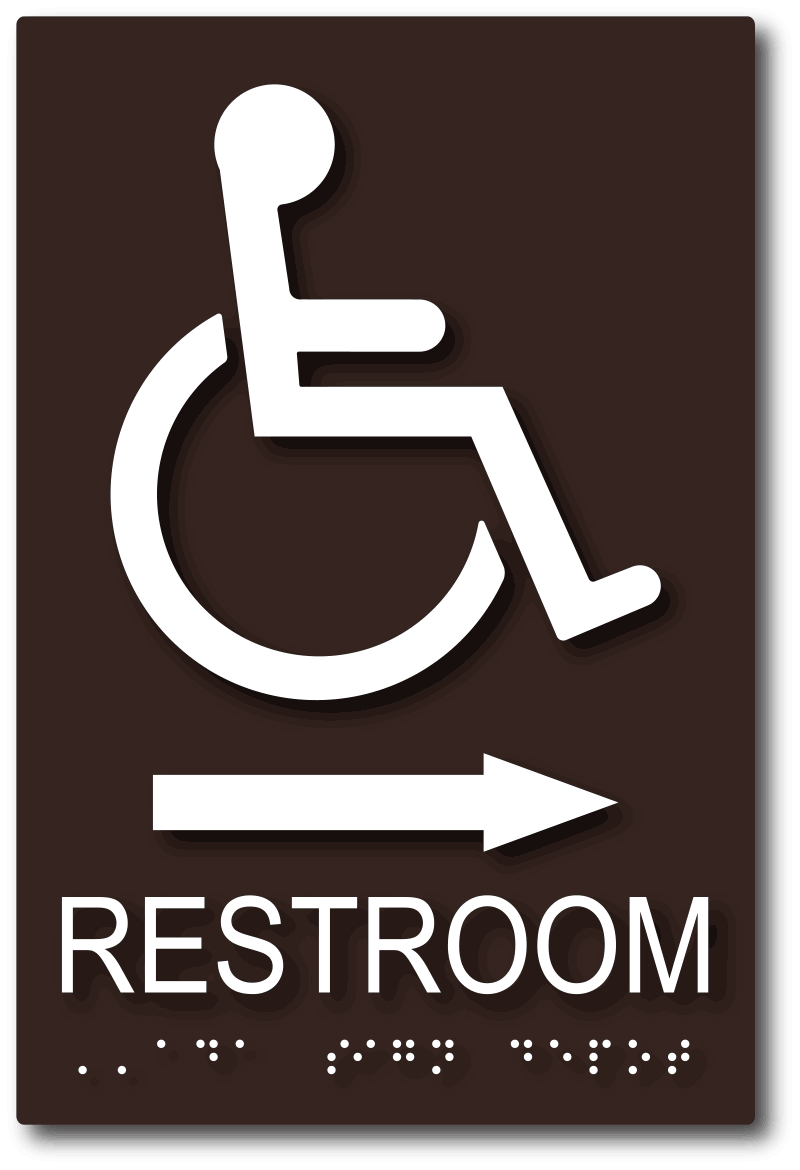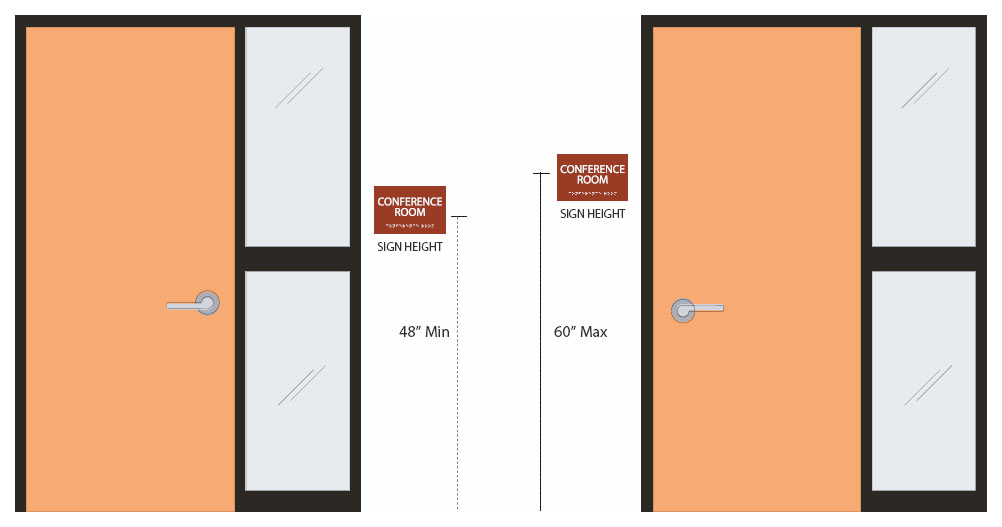The Duty of ADA Signs in Following Availability Specifications
The Duty of ADA Signs in Following Availability Specifications
Blog Article
ADA Signs: Guaranteeing Ease Of Access and Compliance in Public Spaces
ADA signage plays an indispensable duty in assuring accessibility and compliance within public spaces, significantly adding to a comprehensive setting for people with disabilities. By sticking to ADA criteria, signs not just promotes navigation but also emphasizes an organization's dedication to variety and equality. As we explore the nuances of ADA signage, from tactile functions to make intricacies, it's important to think about just how these components integrate to copyright the legal rights of all individuals. What are the common challenges organizations encounter in preserving compliance, and how can future patterns in signage continue to drive availability onward?
Value of ADA Signage
In modern-day society, the importance of ADA signage extends beyond mere compliance with legal mandates to embody a commitment to inclusivity and availability for all individuals. These indicators are essential in developing environments where individuals with disabilities can navigate public areas with the very same simplicity and self-reliance as those without specials needs. By offering clear and standard details, ADA signs makes certain that every person can access facilities, services, and details without barriers.
The value of ADA signs hinges on its ability to enhance the lifestyle for individuals with disabilities by promoting equal accessibility. It removes the challenges that could or else hinder their capacity to take part fully in area life. In addition, these signs function as noticeable indicators of a company's commitment to diversity and equality, reflecting broader social worths that champion the legal rights and dignity of all individuals.
Additionally, ADA signage plays an important role in public safety and security. By assisting individuals to departures, toilets, and various other necessary facilities, it makes sure that all people, no matter physical ability, can evacuate safely during emergencies. In recap, ADA signs is not simply a regulative demand but a powerful tool for cultivating a fair and comprehensive society.
Secret Components of Compliance

Placement is crucial; indicators have to be mounted in locations that are reachable and easily noticeable. Commonly, signs needs to be placed between 48 and 60 inches from the ground to make sure availability for both standing and wheelchair users. Tactile aspects, such as Braille, are important for individuals with aesthetic disabilities, supplying crucial info in a non-visual format.
High-contrast shades in between the message and history are essential to boost readability for people with low vision. The ADA mandates particular comparison ratios to make sure clarity. Furthermore, personality size is a crucial consideration, with minimal height demands dictated by the watching range to make certain readability from various angles.
Design Factors To Consider for Accessibility
Designing obtainable signage needs a thorough approach to ensure it satisfies the needs of all individuals, especially those with disabilities. The dimension of the useful content text is just as important, with ADA standards recommending a minimal height based on seeing range to make sure clarity.
Contrasting colors between message and background are important for exposure, especially for people with aesthetic disabilities. A high contrast proportion assists identify the message from its history, boosting readability under various illumination problems. Furthermore, responsive components, such as Braille and raised personalities, are vital for individuals that are blind or have low vision. These components must be located at a regular height and setting to ensure simple gain access to and comprehension.
Additionally, the placement of signs plays a substantial function in accessibility. Indications must be mounted in locations that are quickly obtainable and unobstructed. Making sure that signage is placed at ideal elevations and angles allows all customers, consisting of those making use of wheelchairs, to engage with them efficiently.
Usual Errors to Avoid

One more common mistake is the incorrect positioning of signs. ADA standards specify specific elevation and place requirements to guarantee that indicators are obtainable and easily noticeable by all individuals, including those making use of wheelchairs. Disregarding these standards not just hinders availability but likewise runs the risk of non-compliance with legal criteria.
Additionally, not enough contrast in between message and history is a frequent oversight. Adequate comparison is crucial for readability, specifically for individuals with low vision. Developers often pick colors that are visually appealing however do not have the necessary contrast, rendering the message tough to discern.
Last but not least, some designers fall short to integrate responsive aspects, such as Braille, which are critical for people that are blind. Omitting these features not just results in non-compliance with ADA policies yet also restricts access for a segment of the population that counts on responsive information.
Future Trends in Signage
Advancements in modern technology and increasing recognition of inclusivity are forming the future fads in signage layout. Digital signs, for instance, is evolving to include real-time updates and interactive attributes, which can be critical in supplying dynamic information in public spaces.
One more emerging fad is the utilization of augmented reality (AR) to improve customer experience. AR-enabled signage can overlay electronic details onto the physical atmosphere, offering aesthetically impaired people with auditory or haptic comments. ADA Signs. This modern technology not only boosts accessibility but also develops an engaging experience for all users
Sustainability is also a substantial variable influencing signs patterns. Eco-friendly products and energy-efficient illumination services are being prioritized to straighten with global environmental objectives. Developments in materials science are leading to the development of more durable and weather-resistant signs.
Conclusion
ADA signs plays an important role in assuring accessibility and conformity within public areas by integrating tactile elements, high-contrast colors, and critical positioning. The adherence to ADA requirements not only helps with secure navigation for people with handicaps yet additionally indicates a company's commitment to diversity and inclusivity. By staying clear of common blunders and embracing future trends, public areas can proceed to progress these worths, guaranteeing that the rights and dignity of all individuals are valued and maintained.
ADA signage plays a vital role in guaranteeing ease of access and conformity within public spaces, considerably contributing to a comprehensive environment for individuals with handicaps. As we check out the nuances of ADA signage, from responsive functions to develop details, it's critical to think about exactly how these aspects coalesce to maintain the rights of all users.In modern culture, the significance of ADA signs expands beyond mere compliance with legal mandates to embody a dedication to inclusivity and access for all people. By supplying standard and clear info, ADA signs makes sure that everybody can access facilities, services, and info without barriers.
ADA signage plays an essential duty in assuring accessibility and compliance within public spaces by including responsive components, high-contrast colors, and tactical placement. (ADA Signs)
Report this page